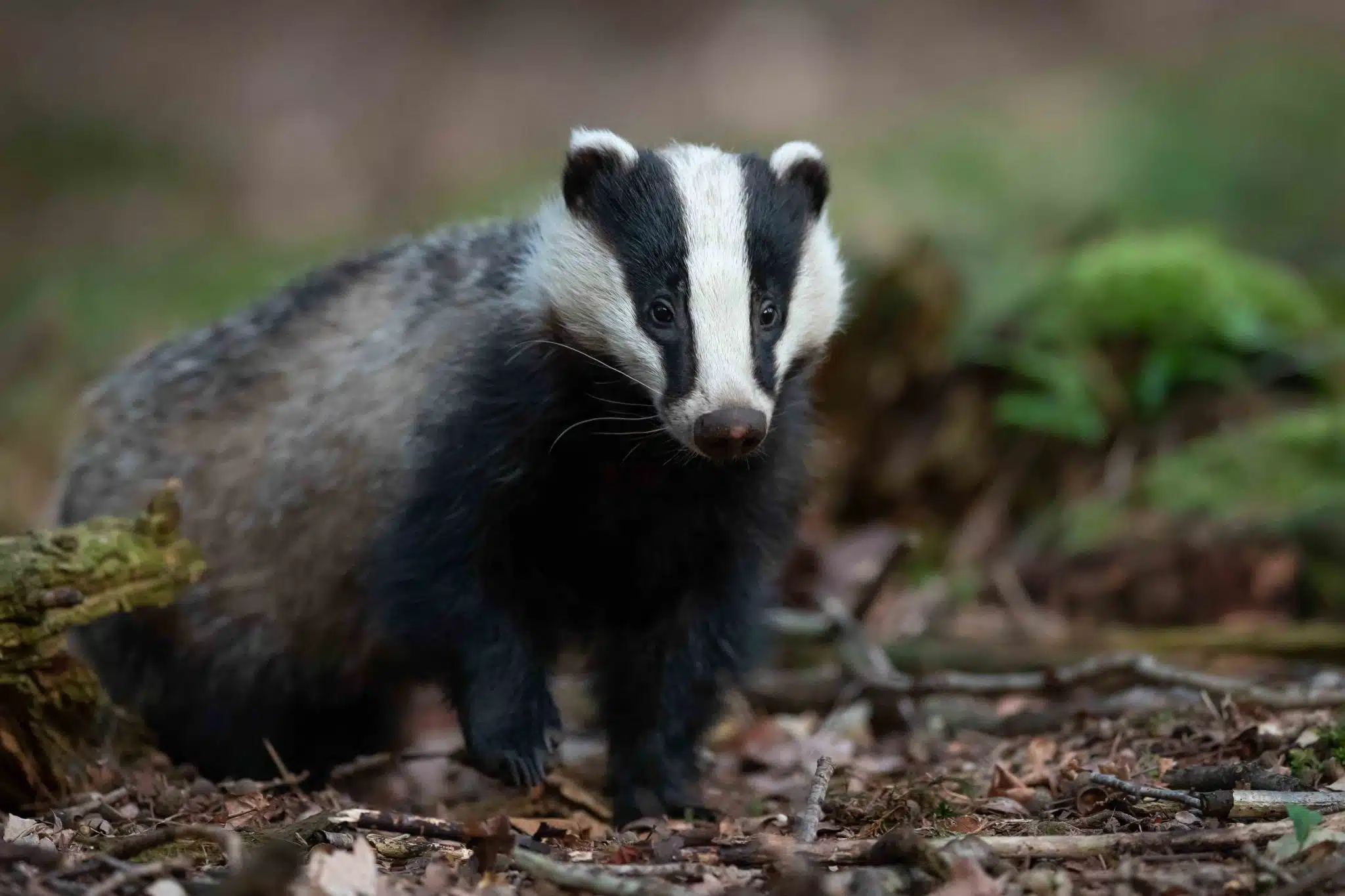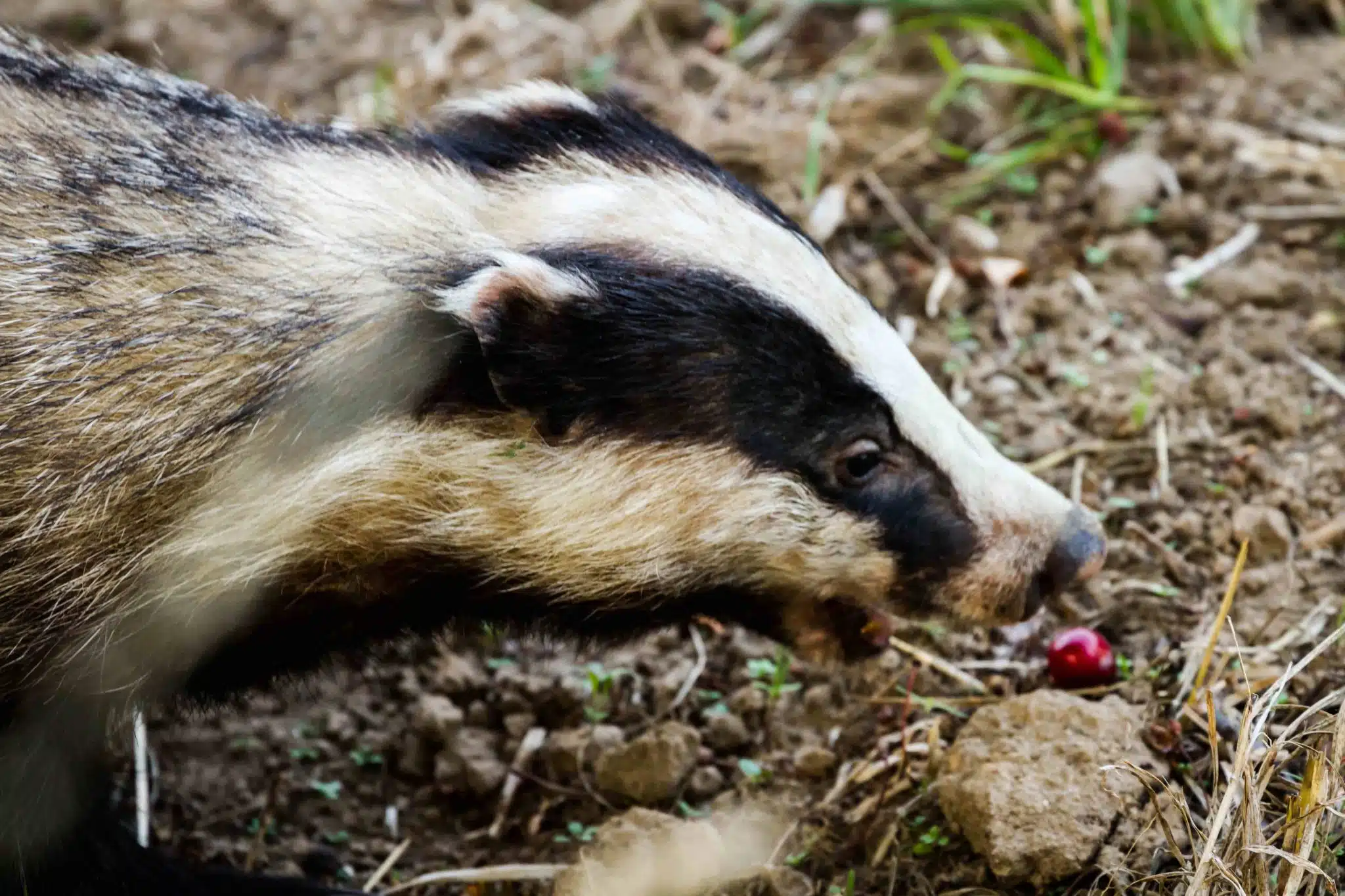The Fascinating Life of Badgers
Badgers with their characteristic white stripes on their faces, are a popular mammal. They are found in many parts of the UK, Ireland and much of Europe as well as the Far East including China and Japan.

The badger belongs to the mustelid family of mammals which includes otters, polecats, ferrets and pine martens. There are 15 different badger species and these include four Eurasian badgers, six ferret badgers, three types of hog badgers, the American badger and the honey badger. Badgers have short but very sturdy legs and broad feet with powerful claws for digging. They usually measure 75- 90 cm in length and can weigh between 10-15 kg. The name ‘badger’ comes from the French word bêcheur’ which means ‘ digger’. Badgers can live 10- 15 years. A male badger is called a boar and a female badger, a sow. Places in the UK with broc, brock or brox in their names have definitely had a connection with badgers as these are the old English and Celtic names for badgers.
Badgers live in clans
A family of badgers living in the same sett is known as a ‘clan’. The clan usually comprises of about eight animals of both sexes. They like to live in wide open grassland but are as happy in woods and hedgerows. They each have duties within the sett to keep it clean and they forage for food individually – but never bring it back to the sett as they like to keep it clean and tidy.
Although the black and white stripes on the badgers face seem very distinctive, they are actually effective camouflage when the badgers are out at at night amongst trees.
The sett
The badger’s home is called a ‘sett’. Each clan of badgers has its own sett, which is an elaborate system of chambers that are interconnected by tunnels. Setts are often located in woodland and can have as many as 40 entrances and a laborious network of tunnels between 20-100 metres in length! The tunnels are usually about 30cm in width and 25cm in height. All the entrances are always kept clean and clear. Often setts have been used and developed by several generations of badgers and can be more than 100 years old.

As well as the main sett, some clans have several smaller other setts too. These are used as a safe retreat if the badgers are disturbed while out foraging. Although the badger looks thick set and has relatively short legs, he is surprisingly strong and to get out of trouble can run at 18 kph. Badgers are not adverse to sharing their setts with other animals including porcupines and stone martens and they are particularly happy to share their home with red foxes.
Some badgers have become urbanised and dig their setts in towns and cities in parkland or under buildings and they forage for food in gardens and parks in the locality.
Badgers have a great sense of smell

The badger’s diet
More than half of the badger’s daily diet comprises of earthworms and during a single night of foraging, an adult badger can eat nearly 200 worms. Badgers also like to eat the larvae of ‘Daddy Long Legs’, frogs and lizards as well as slugs and snails. Badgers also eat pears, apples, plums and soft fruits such as blackberries as well as nuts. If food is in short supply, the badgers may eat small hedgehogs, voles or rabbits.
Badger cubs
Badgers only have one litter each year and this numbers between one and five cubs. Just before her cubs are born, the sow prepares a special area for them within the sett. She drags soft fern, hay and grass in to the chamber to make a bed to keep her cubs warm. Litters are usually born February/ March and the cubs stay underground for the first three months before they emerge above ground. Although the cubs are born furless, by the time they emerge from the sett, they have their adult fur and markings.
The badger’s day
As badgers are nocturnal, they usually sleep in their sett during the day – emerging above ground at night. During the summer though, badgers do often leave their setts just before sunset and will spend the night foraging for food.

European badgers (Meles meles) are legally protected in the UK and other European countries. In the UK, they are protected by the Protection of Badgers Act 1992, the Wildlife and Countryside Act (1981), and the Convention on the Conservation of European Wildlife and Natural Habitats. In many parts of Europe, where they have been illegally culled, their numbers are now stabilising. In 2018, PETA revealed that in China thousands of badgers were being cruelly killed to support the shaving brush industry. The sharp decline in their numbers has been successfully stalled, but vigilence and education is needed..
If you would like to learn more about badgers or would like the opportunity to observe badgers at night, get in contact with the Badger Trust.-
